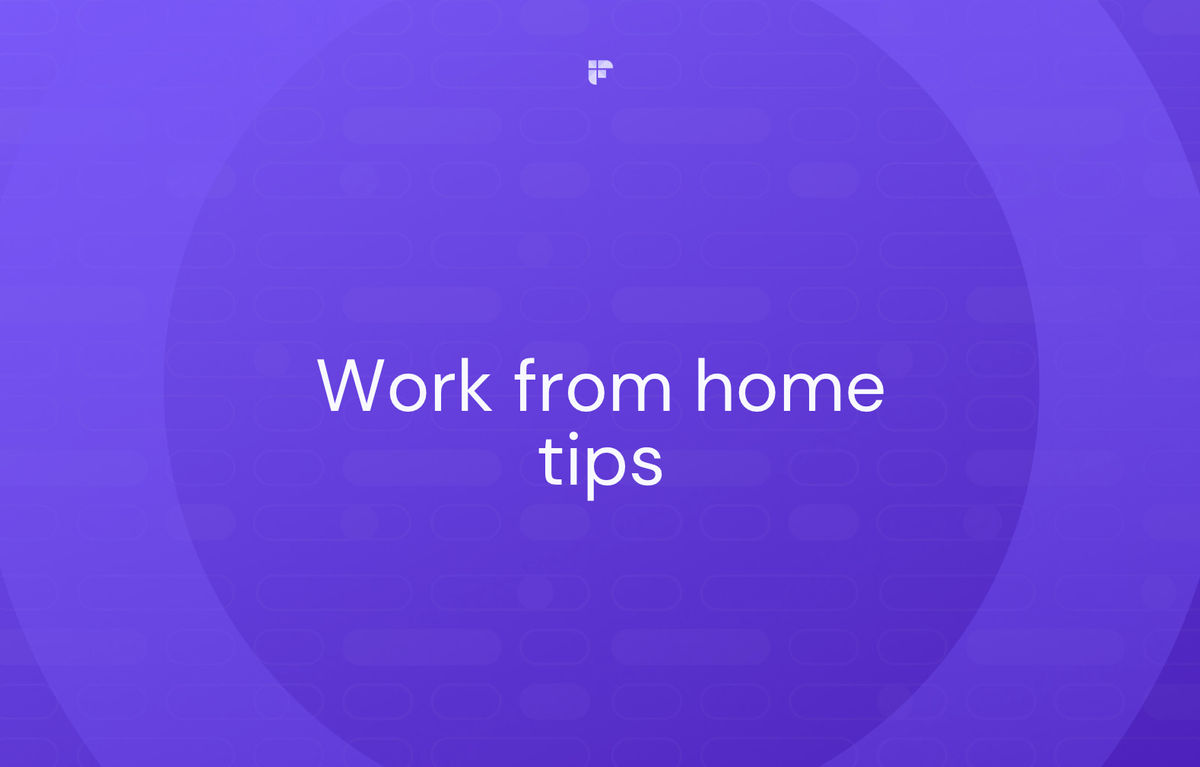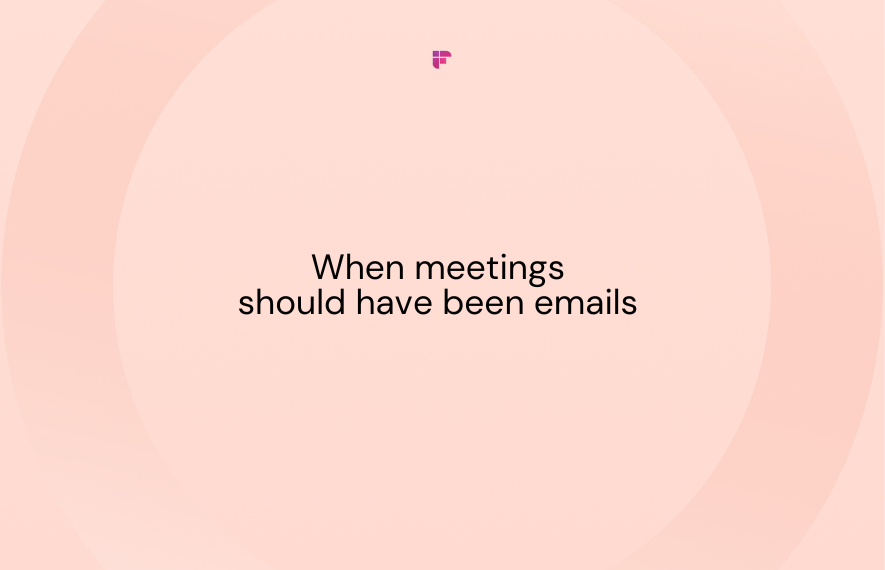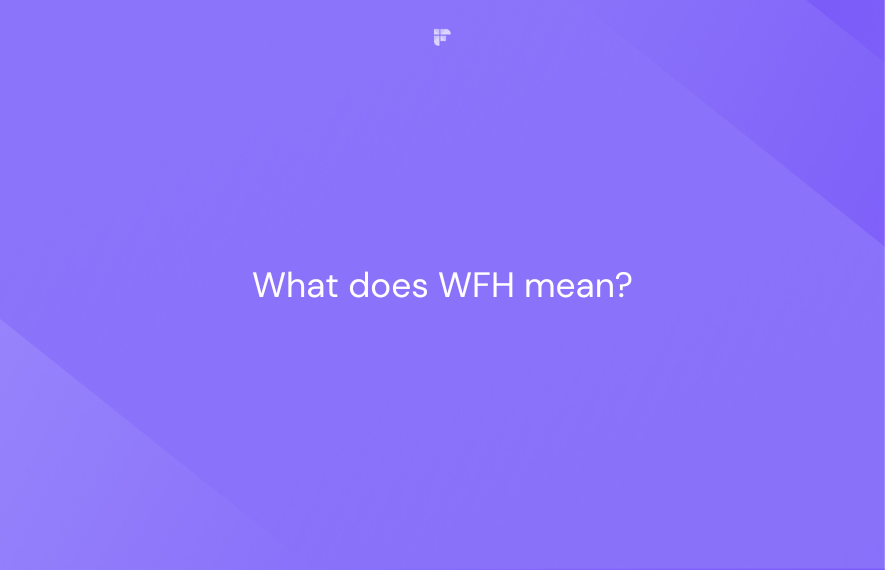The pandemic has rapidly normalized the concept of working from home. A report from Forbes confirms 12.7% of full-time employees were working from home (WFH) in 2023.
But what does WFH mean? Is it simply an acronym for Working From Home, or does it mean something more?
Continue reading as we explore:
- The meaning of WFH
- The difference between WFH and remote work
- The benefits of WFH for employers and employees
- Tools required to WFH, and more!

WFH meaning
WFH means an employee works from their house, apartment, or residence rather than the office. Many companies have a WFH policy allowing employees to work from home full-time or when it's most convenient for them. Employees who work from home often have a home office or designated workspace where they can focus and stay productive.

The WFH acronym is often used in messaging tools (e.g., Slack, instant messaging, email auto-replies, text messages) to communicate they're working remotely.
WFA: Work From Anywhere
WFO: Work From Office
Video conferencing tools and collaboration apps have made it easier for coworkers to communicate and stay connected, regardless of geographical location. More on that later.

WFH in numbers
The landscape of remote work is expanding, as backed by recent statistics:
As of 2023, 12.7% of full-time employees work exclusively from home.
Meanwhile, 28.2% of the workforce have adopted a hybrid model that combines remote and in-office work. Despite this rise, over half (59.1%) of employees still work fully in the office.
An Upwork study estimates the number of remote workers in the U.S. will grow to 32.6 million by 2025. This would represent 22% of the total workforce.
A survey found 98% of workers want to have at least some remote work options.
About 16% of firms (including ours!) operate as fully remote with no physical office space.
While traditional in-office work still dominates, these statistics show a steady, ongoing shift towards WFH and hybrid arrangements.
Is WFH the same as remote work?
While the terms "working from home" (WFH) and "remote work" are sometimes used interchangeably, there are distinct differences between the two flexible work arrangements.

At a high level, WFH means employees working from home instead of commuting to an office. Remote work has a wider scope, enabling working from anywhere—coffee shops, co-working spaces, or even while traveling.
To understand the key distinctions, here is an overview comparing WFH and remote work:
Tools needed to WFH
Video conferencing platforms such as Zoom and Microsoft Teams are essential for communication and collaboration in a WFH setting. However, virtual meetings alone cannot guarantee full clarity or alignment. Without proper documentation, details can get misinterpreted or forgotten.

This is where tools like Fireflies.ai come in. Fireflies utilizes AI to generate automated meeting notes, summaries, action items, and transcripts. It integrates with 8 video conferencing platforms to record, transcribe, summarize, and analyze your conversations and organize them in three default channels. (Plus, you can create unlimited public and private channels based on your subscription!)
By creating a searchable record of virtual discussions, Fireflies ensures transparency, accountability, and a single source of truth. Together with video conferencing, it eliminates ambiguity and misalignment that can occur in remote collaboration. And the best part is it has a generous free-forever plan.
Other valuable tools for effective WFH include project management platforms like Asana and Trello, chat apps like Slack and Teams, and cloud storage services like Dropbox.
Automation from Fireflies is a game-changer for producing comprehensive, shareable meeting documentation.

With the right mix of technologies, like automated note-taking from Fireflies and video conferencing, WFH teams can collaborate as if they were in the same room.

Benefits of working from home
As remote work gains momentum, the traditional 9-to-5 office model is being reimagined. Working from home (WFH) offers transformative perks for both employees and organizations.
Benefits of WFH for employees
- Better work-life integration by removing rigid boundaries between personal and professional realms.
- Increased happiness, job satisfaction, focus, and productivity by avoiding commutes and customizing their work environment.
- Major time and cost savings from eliminated commutes.
- Contribution to a greener planet through lower carbon emissions from reduced commuting.
Benefits of WFH for employers
- Access to talent beyond geographic borders.
- Drives innovation by bringing in diverse perspectives.
- Boosts employee retention and productivity by enabling better work-life balance and minimizing office distractions.
- Lower facility costs allow the reallocation of resources more strategically.
- Enables business continuity during disruptions that close offices.
Conclusion
WFH has evolved from a temporary solution to a mainstay in our work culture, driven by technological advancements and changing attitudes toward work flexibility.
As we navigate this shift, understanding the nuances of WFH, distinguishing it from remote work, and leveraging the right tools are essential steps toward thriving in this new normal.
So, next time you see someone using a house emoji on their Slack status, remember that WFH isn't just about escaping the office; it's about embracing a new era of connectedness and productivity, all from the comfort of your space.
And who knows, maybe you'll be joining the remote revolution soon!









